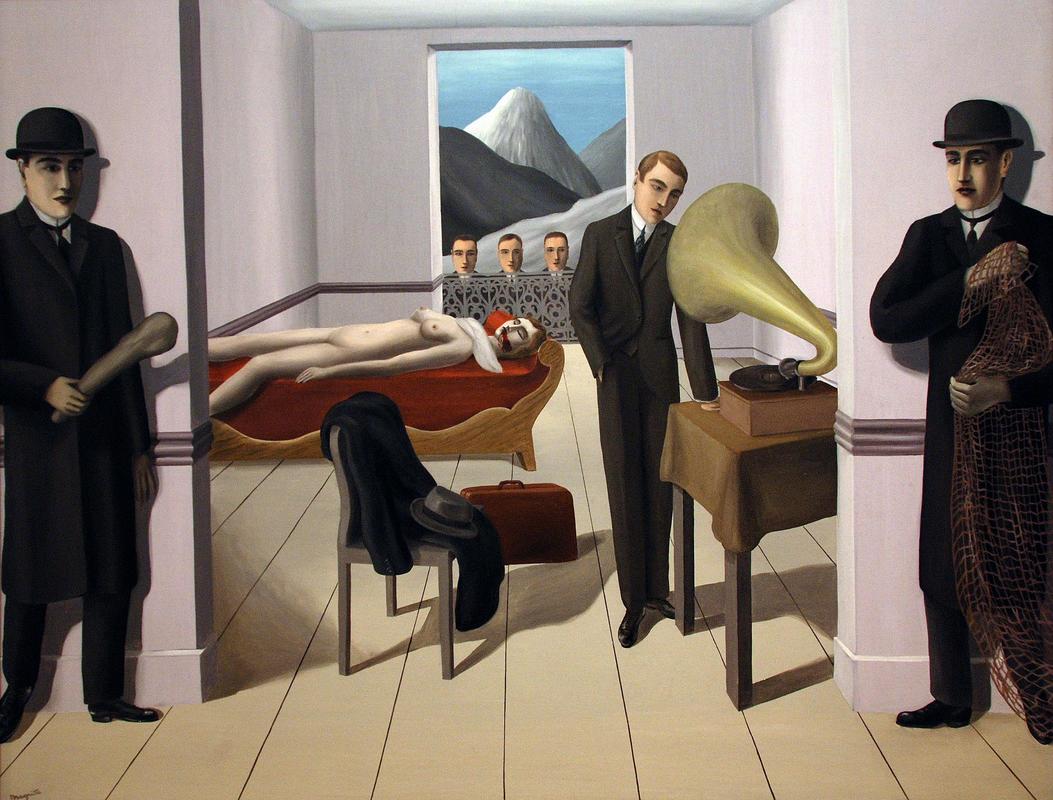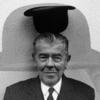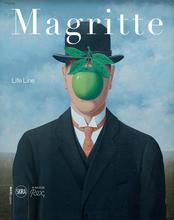More about The Menaced Assassin
- All
- Info
- Shop

Sr. Contributor
Magritte had a hankering for crime, and he even had a favorite (fictional) murderer.
Almost a century before Michael C. Hall became Dexter, Fantômas was the original pop culture serial killer who was a star in both print and on the big screen. Magritte adapted a scene from the 1913 Fantômas flick The Murderous Corpse to build the composition of this painting. It turns out that Fantômas was a favorite of many of the Surrealists, so Magritte was drawing inspiration from a movie star, just like Warhol and Koons also would years later.
But it’s really no wonder why Magritte loved Fantômas so much. This painting has all the trappings of a harrowing episode of Law & Order: SVU: sex, murder, and a surprise twist. The two men wearing bowler hats, one of Magritte’s signature motifs, are waiting to ambush the man who just committed the murder. For Magritte, the bowler hat helped connect his strange images to the everyday experience – middle-class, Belgian men, including Magritte himself, often wore these chic hats.
As a Surrealist, Magritte was interested in creating a state of cognitive dissonance for his viewers. While they may feature familiar objects and figures, none of his paintings make sense. Unlike the disturbing dreamscapes of Dalí, Magritte’s weirdness takes place in the realm of reality. What strangeness lurks around the corner of our familiar settings and the situations and objects we encounter everyday? Magritte is here to show us. His special knack for getting into people’s heads and freaking out his viewers was a result of his days in advertising. I guess advertising has always been a little bit evil, even in the days before commercials.
One of Magritte’s landmark works, The Menaced Assassin was painted for his first solo exhibition in 1927. The painting eventually made its way to the Museum of Modern Art in New York when the museum purchased the work from another artist, E.L.T. Mesens, in 1966. The museum had the money to make the purchase from a very generous gift from the artist Kay Sage Tanguy, the wife of famed Surrealist Yves Tanguy. The Tanguys were both artists and avid art collectors, and their collection included works by Magritte, Max Ernst, Paul Delvaux, Andre Masson, and Alexander Calder, to name a few. Before her suicide in 1963, she left almost 100 works to the museum, as well as lots of cash that the museum could use to buy contemporary art. It was the largest unrestricted purchase fund the museum had ever received, and MoMA definitely used it wisely, later buying works by artists like Lee Krasner and Robert Rauschenberg.
Sources
- Gompertz, Will. What Are You Looking At? New York: Plume, 2012.
- Museum of Modern Art. “Kay Sage Tanguy Bequest Shown at Museum of Modern Art.” Press Releases, https://www.moma.org/documents/moma_press-release_326403.pdf. Accessed February 25, 2018.
- Museum of Modern Art. “Rene Magritte. The Menaced Assassin.” Art and artists. https://www.moma.org/collection/works/79267?artist_id=3692&locale=en&so…. Accessed February 25, 2018.
- Pih, Darren. “Rene Magritte: The Menaced Assassin.” Blogs & Channel. Tate. http://www.tate.org.uk/context-comment/blogs/rene-magritte-menaced-assa…. Accessed February 25, 2018.
- The Art Story. “Rene Magritte.” Artists. http://www.theartstory.org/artist-magritte-rene.htm. Accessed February 25, 2018.
- The Metropolitan Museum of Art. “Tomorrow is Never.” Collection online. https://www.metmuseum.org/art/collection/search/488856. Accessed February 25, 2018.
Featured Content
Here is what Wikipedia says about The Menaced Assassin
The Menaced Assassin (French: L'Assassin menacé) is an oil on canvas painting by Belgian surrealist artist René Magritte, from 1927. It is held at the Museum of Modern Art, in New York .
Check out the full Wikipedia article about The Menaced Assassin














